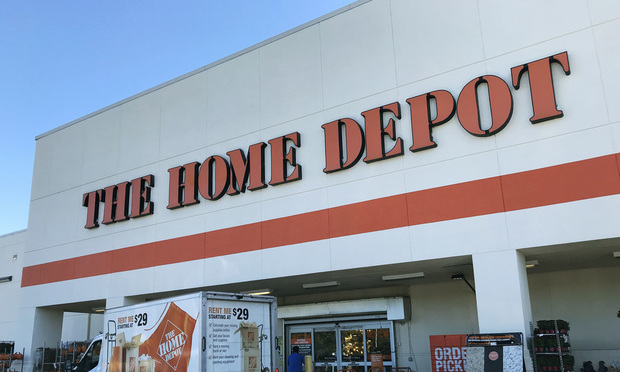One of the more fascinating aspects of insurance, especially now, involves emerging risks.
These are often new technologies that bring with them great advancements but also new hazards that have not been contemplated, handled or previously rated. One of the bigger challenges with emerging risks is keeping up with the changes; new aspects arise rapidly, legislation develops and changes almost immediately, and new problems arise before anyone can really get a handle on the situation.
Here is a look at the current status of some emerging risks; what's happening now, but may be different next month, if not next week:
Eyes in the sky
Drones, or unmanned aircraft, have become incredibly popular over the last few years. They are different from radio-controlled aircraft in that they can be flown completely autonomously, can be used to assist firefighters and police, deliver packages, map property, monitor traffic and many other useful purposes, as well as be purely recreational. However, there are countless issues involved with their use, especially when it comes to privacy. A drone with a camera can be used to peek in windows, a serious privacy issue.
In 2014, there were 238 sightings of drones by commercial pilots; by August 2015 that number had risen to 650. California firefighters were hampered by drones while battling a wildfire; they could not use their aircraft with the drones in the air. They have been used to try to smuggle drugs, buzz a crowd of people, and injuries have occurred to bystanders at a few events. The Federal Aviation Administration is working on outlining regulations for the operation of drones. Some places such as the cherry trees in Washington, D.C., have been declared a no-drone zone.
Related: Your kid just got a drone. Should you get insurance?
Coverage for drones is tricky. Under the Homeowners' policy there may be coverage for property damage as they could be considered a hobby aircraft, but they are not specifically defined. The same applies to liability coverage. ISO has developed exclusions for the commercial liability form that applies to drones. There are also endorsements that apply some limited coverage for drones on the commercial liability form.
Who's driving?
Self-driving vehicles are another technology that has great potential and is rapidly changing. A self-driving or autonomous vehicle is one that can drive itself with no human intervention. The human in the vehicle can read, surf the Internet or watch television. It would be a boon to the disabled, as they could freely move around without having to depend on others for rides.
There are thoughts of autonomous taxis or ride-sharing vehicles where the potential passenger simply calls for a car and an empty car arrives at his home to take him to his desired location. Uber is seriously looking into obtaining autonomous vehicles. Advantages of this are a tremendous reduction in accidents, as human error is responsible for 90 percent of all auto accidents.
While many hail this technology, there are concerns. Proposed legislation from the California Department of Motor Vehicles still requires a licensed driver be at the wheel. If a passenger needs to take over for the car, what is the time delay, especially if the passenger is engaged in other behavior? Who is liable when the autonomous vehicle has an accident? Is it the passenger or the manufacturer of the vehicle?
With accidents drastically reduced, what does this do to the auto insurance industry? With a combination of autonomous vehicles and ride-sharing, will people even own vehicles that need insuring? Can the vehicles be hacked and then directed to go to a particular location or cause accidents at rush hour? There are many advantages, but also a number of concerns that have not been sorted out yet.
Related: Will self-driving cars bring safer roads?
Many manufacturers are working on the technology, so this is not an "if" question, but more of a "when" question. While it is expected to be several years after autonomous vehicles are available before the fleet of cars on the road is predominately autonomous, that day is expected to happen.
Continue reading …
Many of the concerns with ride-sharing center around the driver's lack of coverage on his or her personal auto policy when signed in to the app to look for a passenger. This makes the vehicle "for hire," which is excluded in most personal auto policies.
Monitoring driver behavior
Telematics is usage-based insurance; it is the development of premium rates in part by monitoring the vehicle and a number of characteristics. These characteristics are:
-
Mileage.
-
Speed.
-
Lane shifting.
-
Hard braking.
-
Turning.
-
Cornering.
-
Fast acceleration.
-
Time of day.
-
Territory.
-
Type of road.
A monitoring device is put into the car that measures and records the desired variables. The monitored variables are then combined with traditional rating factors such as claim history, driving record, vehicle make, model and demographics. Rates are set based on the combination of variables. Recording can be for a limited time or continuous. Limited recording is when the vehicle is monitored for six months, then the device returned to the carrier. Continuous monitoring is when the device stays with the vehicle and monitors continuously. Privacy issues are a major concern; some people object to being monitored every time they drive.
Some equipment uses GPS to monitor location; this raises even more privacy issues, although it does provide better information for rating. With GPS the insured's locations are tracked. GPS can identify the types of roads the driver is on, posted speed limit, types of turns and other significant information.
Whether the vehicle spent 10 minutes going 30 miles on the highway or 30 minutes going 10 miles in heavy traffic is identified. Territory can tell a lot, but only if GPS is monitored.
Related: Imagining UBI's frictionless future
Advantages to telematics are that it is fair and predictive, and customers understand how it relates to rates. It is intuitive, while credit scoring is not to many insureds. It allows customers to improve their driving for their own benefit; their rates are more tied to them specifically instead of a large demographic of similar individuals. Disadvantages include privacy issues, hacking concerns, cost to the carrier of providing the device if it is provided for free, and storage of the data collected.
Transportation changes
Ride-sharing is the practice of using your personal automobile to pick up someone and give them a ride to a specific destination for a fee. The potential driver signs up with a Transportation Network Company (TNC) such as Uber or Lyft that generally check the individual's background, driving record and inspect the vehicle. Once the person is approved as a driver, that person is then allowed to sign into the app as a driver and can begin to pick up riders.
While at first this sounds like a great idea and a way to make extra money, there are many issues involved. Taxis and limousines are highly regulated services and believe that these regulations should also apply to the TNCs. States have concerns about consumers and drivers not being aware of the insurance issues involved and finding themselves not covered by insurance if an accident occurs.
Many of the concerns with ride-sharing center around the driver's lack of coverage on his or her personal auto policy when signed in to the app to look for a passenger. This makes the vehicle "for hire," which is excluded in most personal auto policies. Uber and Lyft provide contingent coverage during stage one; the contingency is that the personal auto policy denies coverage. While Uber's coverage is above state minimum limits, it still only covers up to $50,000 for bodily injury for an individual, up to $100,000 for bodily injury for everyone in the vehicle, and up to $25,000 for property damages, or as seen in the policy, simply 50/100/25.
Workers' Compensation becomes an issue as well; are the drivers independent contractors or employees of the TNC? This is still open to debate; TNCs often state that drivers are independent contractors using their own equipment and setting their hours, while drivers claim that the TNCs are providing work for the driver and are themselves providing a driver for hire. There are various suits by drivers claiming that they should be considered employees and not independent contractors.
This is an overview of some emerging risks destined to or already having an impact on the industry. All of these issues deserve watching, as changes are occurring rapidly and can have significant impacts on the industry as a whole.
Related: Are you prepared for these claims, tech and risk management trends?
Want to continue reading?
Become a Free PropertyCasualty360 Digital Reader
Your access to unlimited PropertyCasualty360 content isn’t changing.
Once you are an ALM digital member, you’ll receive:
- Breaking insurance news and analysis, on-site and via our newsletters and custom alerts
- Weekly Insurance Speak podcast featuring exclusive interviews with industry leaders
- Educational webcasts, white papers, and ebooks from industry thought leaders
- Critical converage of the employee benefits and financial advisory markets on our other ALM sites, BenefitsPRO and ThinkAdvisor
Already have an account? Sign In Now
© 2025 ALM Global, LLC, All Rights Reserved. Request academic re-use from www.copyright.com. All other uses, submit a request to [email protected]. For more information visit Asset & Logo Licensing.









